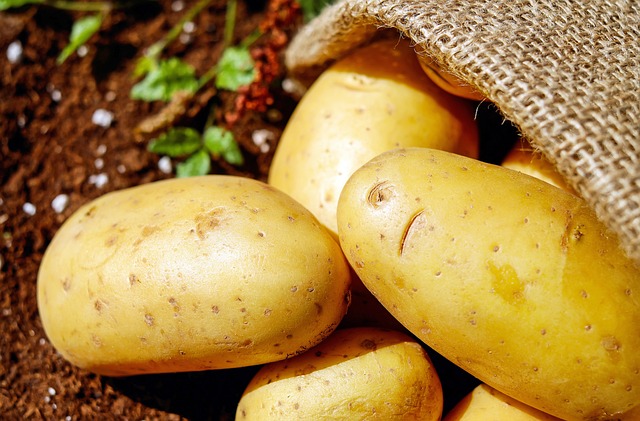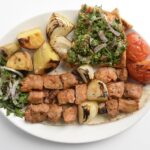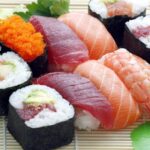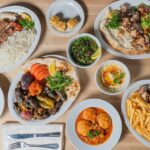What Food Group Are Beans In? All You Want To Know
Beans are a great source of plant protein and also contain other vitamins and minerals like iron and zinc. As a result, they are regarded as belonging to the Protein Foods Group. Beans are frequently regarded as meatless substitutes by vegetarians.
So, what food group are beans in?
Beans are in Vegetable Group. The United States Department of Agriculture (USDA) Food Patterns classify beans as a subgroup of the Vegetable Group. In accordance with the USDA Food Patterns, beans may be included in the category of Protein Foods.
For more specific information, keep reading.
Table of Contents
What Beans Are Classified As?
Beans are first and foremost categorized as a legume, which is the most crucial thing to remember (and the main cause of the confusion). A legume is a plant that bears “fruit” inside of a pod. A legume, beans are harvested and originate from a pod.
That’s the simple part, but depending on your perspective, this part can be a little confusing. A plant with edible seeds is referred to as a fruit. It makes sense that beans would be included in the fruit food group since the beans themselves can be used as seeds to grow bean plants.
But take into account that beans’ high fiber content is just one of the distinctive qualities that make them so healthy. The foods with the most fiber tend to be vegetables like carrots, celery, broccoli, kale, and other similar foods, though there are some exceptions. Beans fit very easily into the vegetable food group as well, as they have fiber levels that rival many of the vegetables with the highest fiber levels and lack acidity and many other characteristics that fruits do.
Do Beans Contain Proteins Or Carbohydrates?
Beans, as well as other legumes like chickpeas and lentils, are excellent sources of both protein and carbohydrates. So even though it can be very alluring to want to group every single food component into a tidy box labeled “protein,” “carbohydrate,” “vegetable,” etc., it’s not really that easy.
It’s best to consider your diet as a whole if you really feel the need to label your beans in order to better understand where they fit in your diet.
For example:
- It’s best to consider your baked beans as a vegetable or carbohydrate if you eat a lot of meat and serve them as a side dish.
- If you follow a vegan diet and consume a lot of beans and lentils, you probably consider them to be the meal’s protein source.
The truth is that it doesn’t really matter what label you slap on each individual ingredient in your food as long as you consume enough of the three essential macronutrients that our bodies require to function. See more about Are Beans Protein?
Micronutrients In Beans
As well as two of the three main macronutrients, beans are also a great source of plenty of smaller micronutrients. These include a variety of vitamins and minerals, which, despite being required in smaller amounts by our bodies than the larger macronutrients, are just as crucial to their proper operation.
There are many micronutrients in beans; the nutrition value of kidney beans is shown in the following table.
| Micronutrient | % of RDA |
| Vitamin C | 7% |
| Iron | 45% |
| Vitamin B6 | 20% |
| Magnesium | 35% |
| Calcium | 14% |
Beans can also be categorized under the “vegetable” food category because they contain such high concentrations of many essential vitamins and minerals.
In actuality, one of your “five a day” can be beans. The UK government recommends that everyone strive to eat at least 5 portions of fruit and vegetables each day for best health (even more is better!). Although legumes and vegetables are botanically distinct, it is widely acknowledged that beans offer a range of micronutrients that rivals many other vegetables, so it is entirely reasonable to consider beans to belong to the vegetable food group as well.
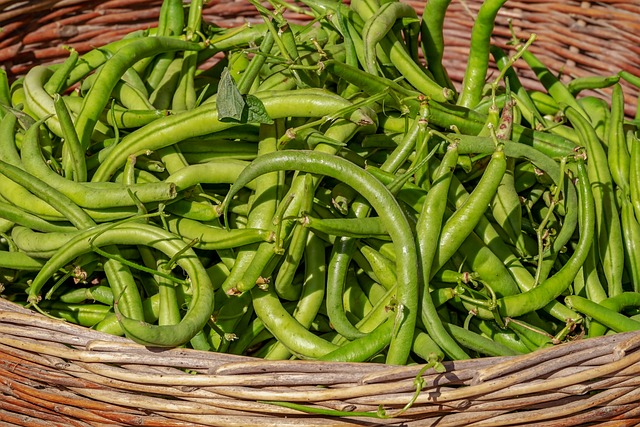
Three Macronutrients That Our Bodies Need
You need to have a basic understanding of the major food groups if you want to know how beans fit into a healthy diet.
Our bodies require large amounts of the following three macronutrients. These shouldn’t be severely limited for any cause (like weight loss), as they give us the energy we need to function. The three macronutrients are:
- Protein: A person’s weight and level of activity have an impact on how much protein they need. The NHS suggests aiming for 50g of protein per person per day as a general recommendation. Nuts, seeds, dairy products like cheese and yogurt, legumes like beans and lentils, meat and fish, and—you guessed it—legumes like beans and lentils—all contain protein.
- Carbohydrates: Our bodies’ primary source of fuel for generating energy is carbs. Bread, pasta, and sugary treats all contain carbohydrates, but vegetables, whole grains, and legumes like beans and lentils are healthier options.
- Fat: Despite being frequently vilified, fat is a crucial macronutrient for giving our bodies energy. Saturated fat, which is found in sources like dairy products, fatty meat, and baked goods, is worse for us than “healthy” fats, which come from ingredients like avocado, nuts, vegetable oils, and fatty fish.
The majority of the essential macronutrients can be obtained in both “good” and “bad,” as you can see. Small amounts of refined carbohydrates or saturated fat in an otherwise healthy diet are not harmful, but unrefined carbohydrates and unsaturated fat are preferable.
The Wildcard
That debate is not over, despite what you might have believed. Beans also contain protein, which is a factor that complicates matters. One of the best non-meat sources of protein, beans are among the foods that are the most high in protein. In many cases, beans don’t fit the definition of a fruit or a vegetable because they are so high in protein; instead, they belong in the protein food group with foods like meat, eggs, fish, and nuts.
Conclusion
It’s okay if you’re still perplexed; categorizing beans as a food group can be somewhat of a rabbit hole. In the end, beans fall under each of those categories of food simultaneously. However, beans are worth including as much as you can in your diet because of their nutritional benefits, regardless of where you find them.
Beans are one of the healthiest superfoods available due to their high vitamin, fiber, and protein content. Not to mention that beans can be used in a variety of delectable dishes as a component, a side dish, or even the main ingredient.
So, with Randall Beans’ assistance, honor National Fruits and Vegetables Month, regardless of which food group you place it in! We have a lot of tasty and straightforward recipes that use Randall Beans in our collection. Discover your new go-to bean recipe right now!
I appreciate you reading.


